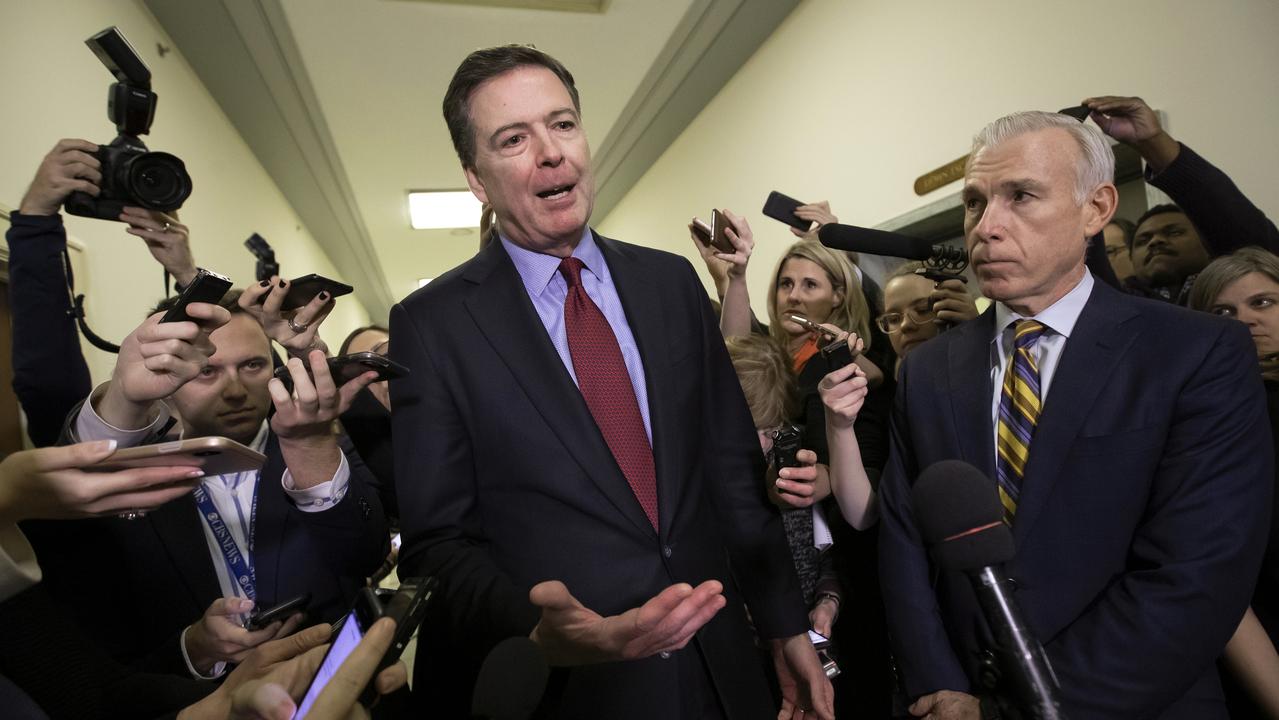Focus on flames of climate change
REGIMES are in play to reduce the carbon cycled into the atmosphere by fire.

FROM space it is possible to appreciate the ferocious predictability of wildfire on Earth. For more than a decade, the US space agency NASA has monitored the Earth's natural systems with its satellite flagship, Terra.
One of the fruits of Terra's observations has been a time-lapse montage charting the Earth's cycle of flames since 2000.
Available on YouTube (Burning Earth -- NASA's Terra satellite), the montage shows how each December flames erupt on the Equator, flaring like an orange necklace across the centre of the African continent, fanning out to Indonesia and Australia to the east and Central America, Colombia and Venezuela to the west.
In July the inferno sweeps the northern and southern hemispheres, Russia, north Asia, China, southern Africa and South America. The satellite images confirm the natural carbon cycle and the impact that human land use has on it. Many of the fires are naturally occurring. Others are the result of slash and burn agriculture.
But they all contribute to the natural process of recycling organic material into the atmosphere, then back into plant growth. Taking better control of the carbon cycle is a foundation stone of efforts to modify the human impact on Earth's climate systems.
In Australia, the federal government's carbon farming initiative is designed to reward better land management to stop environmental degradation and slow the carbon cycle. Stopping land clearing and planting new trees is well understood. The challenge is to reduce the amount of carbon cycled into the atmosphere through fire.
In Australia, several experimental projects have been launched to explore the benefits of moving away from cattle grazing and introducing more traditional fire management regimes to reduce wildfires and cut land-based carbon emissions.
The government has supported two significant property acquisitions that considered test beds for what could be a new boom area of carbon farming.
The first was the $13 million purchase of the 405,000ha Henbury Station grazing property in central Australia in July. The government contributed $9.1m towards the purchase and RM Williams Agricultural Holdings the balance.
RM Williams will de-stock the property of its 17,000 cattle by the end of the year and put in place a program to remove feral plants and animals.
Announcing the project, RM Williams managing director David Pearse said the company saw an exciting opportunity in carbon sequestration. "By managing fire, water, weeds and feral animals we'll encourage natural revegetation, removing carbon dioxide from the atmosphere and storing carbon in the soil and native plants," he said. "We'll be creating sustainable habitat and enhancing biodiversity."
This week, the Henbury project was joined by the $13m purchase of the 178,000ha Fish River Station, about 150km south of Darwin.
The property is a three-way deal involving the federal government, Indigenous Land Corporation and non-profit conservation groups, with the government making the biggest contribution of $8.6m. The aim is to de-stock the property of feral cattle, buffalo and donkeys, and establish an environmental management regime that is at least part-funded through the sale of carbon offset credits to private industry.
Federal Environment Minister Tony Burke says the potential contribution from carbon farming is "important and extraordinary", and central to that is a process of mosaic burns.
"Some early season cooler burns to make sure if wildfires come later in the season you don't get the sort of biodiversity wipe-out that can otherwise happen," Burke says.
Indigenous rangers will be employed to manage the land, which eventually will be given freehold to traditional owners.
The Henbury and Fish River projects are similar in intent but different in execution.
Both will be important in establishing the rigorous scientific methodology for carbon projects that in future will be funded under programs such as the $1 billion natural heritage fund announced as part of the federal government's carbon tax package.
But neither is free of controversy. The Central Land Council welcomed the Henbury project, but former director Bruce Breaden said indigenous groups would have liked the project put into indigenous rather than corporate hands.
The Fish River property initially will be overseen by the Indigenous Land Corporation because there are still tensions about who the ultimate indigenous owners should be.
But it is the broader issue of de-stocking land to reduce methane emissions from animals while profiting from boosting carbon stocks that is sparking most interest, and controversy.
Australian Agricultural Company chief executive David Farley has already sounded the alarm.
In comments published last week, Farley said he was concerned the government's biodiversity program had the potential to de-stock northern Australia, and see landholders move instead into carbon farming.
"We are in conflict with the government," he said. "We want productivity from the land and they are saying here is $1bn to de-stock your farms and plant trees."
The big question is whether carbon farming and livestock are mutually exclusive. Some people believe passionately that it is a matter of proper stock management. They argue that evolution has identified livestock as the most efficient means of cycling carbon from the landscape into the atmosphere.
In his latest book, Here on Earth, Tim Flannery explains how Australia's soil quality and carbon profile have been impoverished by the hunting extinction of the mega fauna that once roamed the continent's northern reaches.
"By eating vegetation that would otherwise burn, the marsupial giants had suppressed fire," he writes. "They recycled the few nutrients available in the vegetation through their guts, pouring out fertiliser in the form of manure and urine, thereby increasing the carbon content of soils, enhancing soil moisture and promoting plant growth.
"With their extinction, however, the grasses and bushes grew rank and fires raged, baring soils, causing erosion and destroying nutritious but fire-sensitive plants.
"Humans had, in effect, taken the ecological bankers out of the ecosystem, and overall productivity most probably diminished ten or a hundredfold."
Flannery argues that with its complex and sustaining ecosystems in tatters, Australia became a land of fire, whose soils grew ever more impoverished and whose once-living carbon had joined a flux of fire-generated CO2 pouring into the atmosphere.
Increased fire created a downward spiral that resulted in the drying out of Australia's heart.
"Prior to the arrival of humans, northern Australia was covered by a kind of rainforest that may have shed its leaves in the dry winter," he writes.
"Much like the forests of the Amazon, which create 80 per cent of the rainfall over the Amazon Basin today, these ancient Australian forests enhanced rainfall by transpiring moisture.
"But when they burned, their capacity to enhance rainfall was lost."
Gold Coast accountant and soil carbon campaigner Tony Lovell says we need to make a distinction between impact of livestock and properly managed livestock.
"I think people have got themselves into a headspace where the only thing to do is de-stock," he says. "It is a sort of thinking that says global warming is bad, animals cause greenhouse gas emissions so the answer is to get rid of the livestock.
"But nature is a cyclical system -- if you take the animals out you will get something to replace their function -- in this case fire."
The response has been to reintroduce traditional burning methods that are designed to reduce the fuel load and avoid the massive uncontrolled burns as witnessed in the NASA satellite images.
"Certainly we can burn better but actually there is something far better than burning," Lovell argues.
"That answer is properly managed livestock. Given the experience of evolution, nature is showing that the least worst way to process carbon stocks is through ruminant animals. That is nature's favoured option."
Supporters of carbon farming argue withdrawing the methane production from livestock is a big positive. Another important advantage is the positive impact on biodiversity and overall ecosystem health.
But in his submission to the federal government's Garnaut review, Lovell said there was an unrecognised opportunity to consume some cyclical greenhouse gases into the soils of up to 488 million hectares of Australia's savanna lands. He said the global potential for such management was about five billion hectares.
Each percentage point change in soil organic matter above five billion hectares of savanna land would reduce atmospheric greenhouse gas levels expressed in terms of CO2 equivalent by 64 parts per million. Lovell says soil carbon levels can be increased by time-controlled grazing management, pasture cropping and biologically beneficial farming practices.
He says the federal government's carbon farming initiative is a good idea.
But Lovell wants more funding directed towards better understanding the carbon storage potential of improved land use.
There are plans for a network of long-established, highly productive farms to be established, which could serve as inspiration and a laboratory to establish the much-needed data.
Lovell says it is inevitable that the Carbon Farming Initiative is first be structured around forestry because that is where the empirical data sets are.
"The biggest concern from the point of view of soil carbon is the permanence issue whereby landholders have to warrant that the carbon stores will remain in place for 100 years.
"There is no permanence requirement in Kyoto and there is no way a landholder or their banker could agree to accepting such a long-term liability.
"If the carbon farming initiative [were] to come in now with soil carbon it would have to come in at such a low rate and with such onerous conditions no one would be interested in it."
Lovell says it is critically important to distinguish clearly between effects that are due to livestock themselves and those due to how human beings decide to manage livestock.
"Livestock like cows and sheep know everything they need to know to be cows and sheep, but they know very little about managing land.
"This means that whether the impact these animals have on a landscape is negative or positive depends 100 per cent on the decisions made by the humans who are in charge of them."
There is a huge difference, Lovell says, "between livestock and properly managed livestock".


